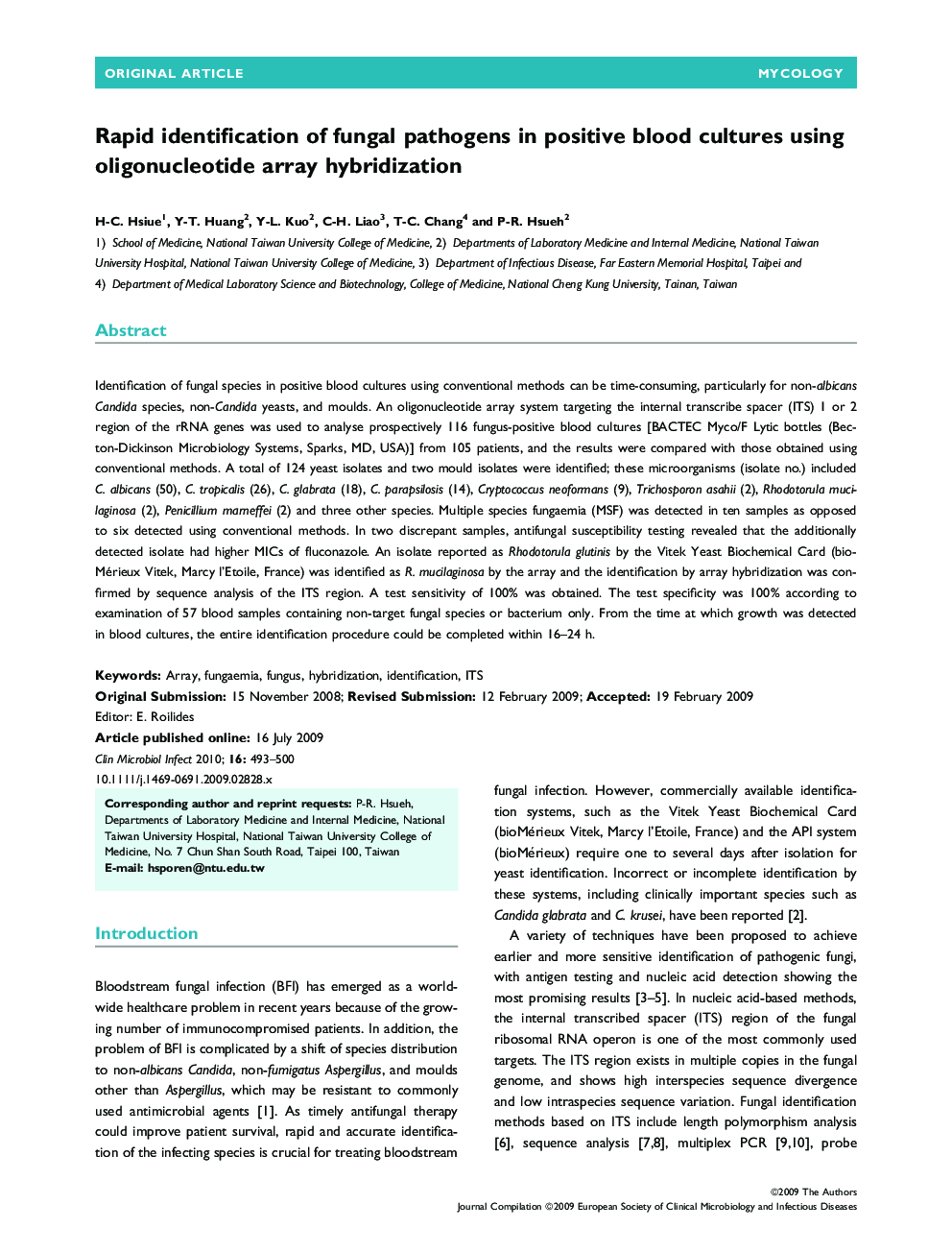| کد مقاله | کد نشریه | سال انتشار | مقاله انگلیسی | نسخه تمام متن |
|---|---|---|---|---|
| 3397471 | 1222229 | 2010 | 8 صفحه PDF | دانلود رایگان |

Identification of fungal species in positive blood cultures using conventional methods can be time-consuming, particularly for non-albicans Candida species, non-Candida yeasts, and moulds. An oligonucleotide array system targeting the internal transcribe spacer (ITS) 1 or 2 region of the rRNA genes was used to analyse prospectively 116 fungus-positive blood cultures [BACTEC Myco/F Lytic bottles (Becton-Dickinson Microbiology Systems, Sparks, MD, USA)] from 105 patients, and the results were compared with those obtained using conventional methods. A total of 124 yeast isolates and two mould isolates were identified; these microorganisms (isolate no.) included C. albicans (50), C. tropicalis (26), C. glabrata (18), C. parapsilosis (14), Cryptococcus neoformans (9), Trichosporon asahii (2), Rhodotorula mucilaginosa (2), Penicillium marneffei (2) and three other species. Multiple species fungaemia (MSF) was detected in ten samples as opposed to six detected using conventional methods. In two discrepant samples, antifungal susceptibility testing revealed that the additionally detected isolate had higher MICs of fluconazole. An isolate reported as Rhodotorula glutinis by the Vitek Yeast Biochemical Card (bio-Mérieux Vitek, Marcy l'Etoile, France) was identified as R. mucilaginosa by the array and the identification by array hybridization was confirmed by sequence analysis of the ITS region. A test sensitivity of 100% was obtained. The test specificity was 100% according to examination of 57 blood samples containing non-target fungal species or bacterium only. From the time at which growth was detected in blood cultures, the entire identification procedure could be completed within 16–24 h.
Journal: Clinical Microbiology and Infection - Volume 16, Issue 5, May 2010, Pages 493–500